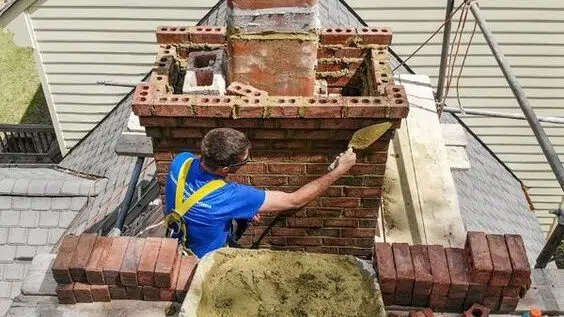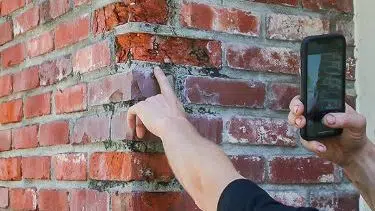Maintaining Your Masonry Fence in Ontario’s Harsh Climate
Masonry fences are a beautiful and durable addition to any property, but Ontario’s diverse and sometimes harsh climate can take its toll on these structures. From freezing winters to humid summers, your masonry fence faces a variety of challenges throughout the year. In this comprehensive guide, we’ll explore essential maintenance tips to keep your masonry fence looking great and functioning well, no matter what Mother Nature throws its way.
Seasonal Inspection and Cleaning Routines
Regular inspections and cleaning are crucial for maintaining the integrity and appearance of your masonry fence. By establishing a routine, you can catch potential issues early and prevent costly repairs down the line.
Spring Inspection
As the snow melts and temperatures rise, it’s time for a thorough spring inspection:
- Check for winter damage, such as cracks or loose mortar
- Look for signs of moisture penetration or efflorescence
- Inspect the foundation for any shifting or settling
- Examine the overall structure for any leaning or bulging
Summer Cleaning
Take advantage of warm weather to give your fence a good cleaning:
- Start with a gentle brush to remove loose dirt and debris
- Use a garden hose with a spray nozzle to rinse the fence
- For stubborn stains, use a mild detergent and soft-bristled brush
- Avoid high-pressure washing, which can damage mortar and bricks
- Allow the fence to dry completely after cleaning
Fall Preparation
Before winter sets in, prepare your fence for the colder months:
- Remove any climbing plants or vines that may have grown on the fence
- Clear away leaves and debris that could trap moisture
- Apply a water-repellent sealer to protect against moisture infiltration
- Trim nearby trees or shrubs to prevent damage from falling branches
Winter Vigilance
While major maintenance tasks are difficult in winter, stay vigilant:
- Keep snow cleared away from the base of the fence
- Avoid using de-icing salts near the masonry, as they can cause damage
- Monitor for any ice dams or large icicles forming on the fence
Dealing with Freeze-Thaw Cycles and Moisture Issues
Ontario’s freeze-thaw cycles can be particularly damaging to masonry structures. As water freezes, it expands, potentially causing cracks in bricks and mortar. Here’s how to protect your fence:
Moisture Prevention
- Ensure proper drainage around the fence to prevent water accumulation
- Apply a high-quality, breathable sealant to the masonry surface
- Keep gutters and downspouts clear to prevent water from splashing onto the fence
- Consider installing a capstone or coping to divert water away from the top of the fence
Addressing Existing Moisture Problems
If you notice signs of moisture damage:
- Identify and fix the source of water infiltration
- Allow the masonry to dry completely before making repairs
- Replace damaged bricks or repoint mortar as necessary
- Consider applying a waterproof membrane to the foundation of the fence
Repairing Minor Cracks and Damage
Catching and repairing minor damage early can prevent more significant issues down the road. Here’s how to address common problems:
Hairline Cracks
- Clean the crack thoroughly with a wire brush
- Apply a masonry crack filler with a caulking gun
- Smooth the filler with a putty knife and allow it to dry
- Sand the area lightly if needed and touch up with masonry paint
Loose or Damaged Mortar
- Remove loose mortar with a chisel and hammer
- Clean out the joint with a wire brush
- Wet the area slightly to improve adhesion
- Apply new mortar with a pointing trowel, matching the existing joint style
- Allow the mortar to cure for at least 24 hours
Spalling Bricks
If you notice bricks with flaking or peeling surfaces:
- Remove loose material with a wire brush
- Apply a masonry patching compound to the damaged area
- Shape the compound to match the brick’s texture
- Allow to dry and cure according to the product instructions
Protecting Against Efflorescence and Staining
Efflorescence, the white, powdery substance that sometimes appears on masonry, is a common issue in Ontario due to our climate. Here’s how to deal with it:
Preventing Efflorescence
- Ensure proper drainage around the fence
- Use a breathable sealant to prevent moisture penetration
- Choose high-quality, low-efflorescence bricks and mortar for new construction
Removing Efflorescence
- Start with a dry brush to remove loose efflorescence
- For stubborn deposits, use a mild vinegar solution and scrub gently
- Rinse thoroughly with clean water
- Allow the fence to dry completely
- Apply a breathable sealant to prevent future occurrences
Dealing with Other Stains
For other types of stains on your masonry fence:
- Use appropriate cleaning solutions based on the type of stain (e.g., rust, algae, graffiti)
- Always test cleaning products on a small, inconspicuous area first
- Avoid harsh chemicals that could damage the masonry
- Consider professional cleaning for persistent or extensive staining
When to Call a Professional for Maintenance or Repairs
While many maintenance tasks can be handled by homeowners, there are times when it’s best to call in a professional masonry expert:
Structural Issues
- Significant leaning or bulging of the fence
- Large cracks or separations in the masonry
- Signs of foundation settling or shifting
Extensive Damage
- Widespread mortar deterioration
- Multiple damaged or spalling bricks
- Severe water damage or efflorescence
Complex Repairs
- Rebuilding sections of the fence
- Installing new drainage systems
- Applying specialized sealants or coatings
Routine Professional Maintenance
Consider scheduling professional inspections and maintenance every 3-5 years to ensure your fence remains in top condition. Experts can:
- Perform thorough inspections using specialized equipment
- Identify potential issues before they become major problems
- Provide professional cleaning services
- Offer advice on long-term maintenance strategies
Conclusion
Maintaining your masonry fence in Ontario’s challenging climate requires diligence and care, but the results are well worth the effort. By following these maintenance tips and staying proactive in your approach, you can ensure that your masonry fence remains a beautiful and durable feature of your property for years to come.
Remember, regular inspections, timely repairs, and addressing moisture issues are key to preserving your fence’s integrity. Don’t hesitate to seek professional help for complex issues or if you’re unsure about any aspect of maintenance. With proper care, your masonry fence will continue to enhance your property’s value and curb appeal, standing strong against Ontario’s diverse weather conditions.
\n\n\nNo faq
No FAQs are available at this time.



